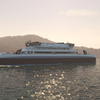Picture 165-2: The 13,000 TEU container ship
With an innovative design study for a
13,000 TEU container ship, Germanischer Lloyd and the Korean yard
Hyundai Heavy Industries (HHI) are showing just how big container
carriers will be in the near future. Before over 100 customers at the
Container Forum, Mr D.S. Cho, Executive Vice President of HHI, and
Jan-Olaf Probst, Ship Type Manager for Container Ships at Germanischer
Lloyd, presented their new ship design with two main engines and two
propellers. All the relevant calculations have been carried out and the
design completely approved by Germanischer Lloyd; the Korean yard is now
accepting orders.
The ship is 382 metres long and 54.2 metres wide, and has a draught of
13.5 m. The 6,230 containers below deck are stacked in 10 tiers and 19
rows, while the 7,210 deck containers are stowed in 21 rows. Powered by
two 45,000 kW engines, the vessel's speed is 25.5 knots. The design
study is characterized by two technical innovations: the cooperation
partners decided on a twin drive configuration and the separation of
deckhouse and engine room.
The question as to what propulsion powers and arrangements are needed to
achieve the desired speed of 26 knots may be answered by diverse
technical approaches: in the early phase of detailed calculations, not
only the twin drive, but also the possibilities offered by one main
engine, as well as one main engine with an additional pod drive, were
considered. The cost estimate for the various drive configurations,
never before done by a shipyard, indicated that a twin propulsion system
was only negligibly more cost-intensive than the variant with only one
main engine.
From the technical standpoint, the aspect of absolute safety is a major
argument for the twin drive. In the event of an engine failure, the ship
would remain manoeuvrable and could reach a safe harbour under its own
steam. The main-engine and shaft sizes correspond to those of a 4,000
TEU carrier. More than 15 years of experience and smooth operation speak
in favour of this size of propulsion unit. Engines and propellers of
this size are in widespread use, making the maintenance and procurement
of spare parts both easy and cost-effective.
On the other hand, the single-engine variant leads to several
difficulties that have not been solved as yet. The output of a
14-cylinder engine is not enough to achieve the required speed, whereas
a 16-cylinder engine would be too large. As regards propeller size, HHI
believes that the maximum has been reached with a diameter of 9.5 m and
a weight of 110 t. What is more, the single-screw design involves a
great risk of cavitation; the extremely high shaft power also represents
a hazard.
With a view to meeting the SOLAS requirements for bridge visibility on
such a large ship, the design envisages the separation of deckhouse and
engine room. The innovative arrangement of the deckhouse in the forward
part of the ship permits an increase in container capacity and a
reduction in ballast water. The international regulations on the
protection of fuel tanks are also satisfied with this design, because
they are located in the protected area below the deckhouse. Another
welcome result of this innovation is reduced bending and increased
stiffness of the hull.
Subscribe for
Maritime Reporter E-News
Maritime Reporter E-News is the maritime industry's largest circulation and most authoritative ENews Service, delivered to your Email five times per week










